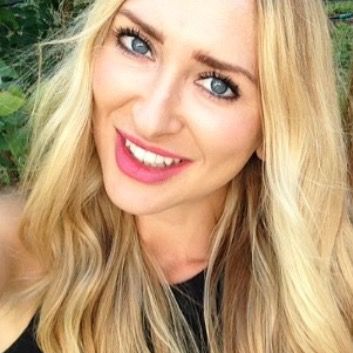 Take a close look at the magazine rack next time you’re standing in the checkout line. It might be a new week, but it’s always the same story: celebrities looking angelic and beautiful. Unless you’re perusing the tabloids, which is another, though similar story. For the most part, it’s like taking a quick course in Photoshop: strange and oftentimes totally gratuitous edits made to bodies and faces that definitely don’t seem to need them.
Take a close look at the magazine rack next time you’re standing in the checkout line. It might be a new week, but it’s always the same story: celebrities looking angelic and beautiful. Unless you’re perusing the tabloids, which is another, though similar story. For the most part, it’s like taking a quick course in Photoshop: strange and oftentimes totally gratuitous edits made to bodies and faces that definitely don’t seem to need them.
Is there no end in sight to society’s obsession with cookie-cutter flawlessness on magazine covers? London-based Anti-Agency, founded in 2013, would like to think not.
According to Anti-Agency’s website, “the agency is for people who could’ve been models and decided not to, for people… with real lives.” There’s a bit of an allure to this concept, right?
Show us a person out there who hasn’t stomped down an imaginary catwalk at some point in her teens (or twenties or thirties or forties) and thought “Sh*t, this is easy – I could definitely do this” and we’ll show you someone fibbing through her teeth. Alas, a quick look at the “Antimodels” page brings us back down to earth – although, there are eccentric hairstyles, tattoos, and nose rings galore and no sight of specific height of weight requirements, every single face featured on the website is completely and unequivocally “model beautiful.” It’s not exactly the come-one-come-all that the name or the purported concept behind the agency might have us believe.
And really, how could it be? These people might not be “models,” per se, but they still have to be competitive enough to book actual modeling gigs. Anti-models have to eat, too (even if their portions are super tiny). Sure, these faces might look a little “edgier” (just imagine all the hipsters on your Instagram feed and you’ll be on the right track) than the average commercial print model, but are they a representation of the average Jane? No. Definitely not. Society hasn’t seen that yet and, according to some big-wigs in the industry, it won’t. Not anytime soon, at least.
Alexandra Schulman, editor at British Vogue, recently did an interview on BBC Radio 2 claiming that no average consumer actually wants to see a “regular” person on the cover of Vogue. She revealed one of the better-known secrets of the magazine industry: there are elements of fantasy and escapism at play when a consumer browses through a copy of Vogue, or any other fashion magazine. It’s what allows people to be drawn to and engage with the magazine and it’s what makes it so easy to imagine that runway as being almost within our grasps. During the interview, Schulman goes so far as to say: “People don’t want to buy a magazine like Vogue to see what they see when they look in the mirror. They can do that for free.”
Harsh as it may sound, there is some version of the truth in her talk. Consumers might claim they want to see more realistic representations of the human form, but their reactions don’t seem to reflect that desire when an actress like Lena Dunham reveals her body in all its reality for the world to see on HBO’s Girls. Or say, the number of followers that supermodels have on Instagram. If they hate it so much, why does it work?
The same concept applies when we consider the other side of the coin: cries of outrage and disapproval when a familiar face is digitally altered almost beyond recognition, and shock when the original photos are inevitably “leaked.” Too real, too fake… but never enough to make any one actually happy.
It seems like we’ve landed ourselves smack dab in the middle of two extremes that we’re unable to choose between. On the one hand, we claim that we don’t want the unrelatable: the models who are too skinny and too beautiful, so perfect that they can’t be real but still manage to bring up insecurities and doubts and feelings of unworthiness. On the other, though, we run screaming from the far-too-relatable: the models and figures who are a little too close to our own realities, realities we might not be ready to face despite the fact that we live with them every day.
There shouldn’t have to be a choice, there shouldn’t even have to be this type of situation in existence, but we seem to make a decision every time we pick up a cover of Vogue and add it to our shopping carts in the supermarket checkout line. And for some reason, it doesn’t feel like the right one. Maybe the solution lies in getting rid of fashion magazines and media in general. No magazines = no problems.
JK. Enough with the blasphemous thoughts.










-300x169.jpg)





